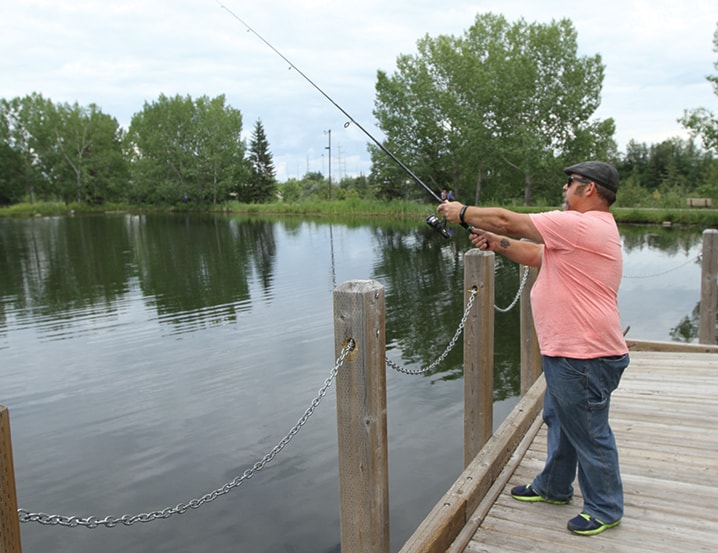Anglers are being asked to be extra careful with fish along the Eastern Slopes because this year’s low river flows and warm temperatures are stressing them out.
The ES2 (Red Deer and North Saskatchewan rivers), ES1 (Oldman and Bow rivers), and ES4 (Smoky River) watershed units are covered by a recent advisory issued by Alberta Environment and Parks.
Until conditions improve, anglers are being encouraged to fish in stocked ponds and lakes, fish early in the mornings, and release fish as quickly as possible to minimize fish mortality.
This weekend is one of two free fishing weekends during the year where Albertans can fish without a licence but must still follow all regulations.
The low flows in rivers this year has been caused by a reduced snowpack and not enough rain to create significant run-off.
John Tchir, resource manager for the Red Deer/North Saskatchewan region of Alberta Environment and Parks, said that fish in general, but especially cold water fish such as trout, are very sensitive to water temperatures and require cold water refugia when stream temperatures rise.
During low flows, fish tend to congregate in deeper pools or where there is ground water exchange to avoid warmer water and areas of the stream with limited or no cover where they hide from predators, Tchir said.
During these times congregating fish are extremely vulnerable to angling and the risk of angler-induced release mortality goes way up, he said.
Fish have evolved to adapt to changing stream conditions by moving to areas of cold water refugia but often fish movements are restricted by perched culverts and dams and sometimes these barriers can affect survival of fish by limiting available habitat.
While fish populations can be affected by flood and low flow conditions, they tend to be resilient, Tchir said.
Alberta Environment and Parks staff are developing a comprehensive plan to manage angling-related risks to fish during low-flow events. Meanwhile they are monitoring conditions and may implement angling restrictions if necessary.
